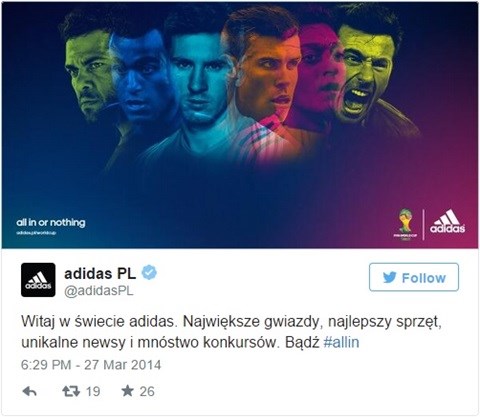Since Twitter launched keyword targeting in timeline, brands and advertisers have developed useful techniques to use the feature to reach the right people in the right moment. Here are five ways to use keyword targeting to make your Twitter campaigns more effective...
Use what you've learned from search, but don't stop there
If you're familiar with search marketing, many Twitter keyword targeting best practices won't surprise you. For example, you can match keywords as a phrase, as a series of words in any order, or with broadening to similar terms. And it's best to set up multiple campaigns that target tightly themed groups of keywords.
When people enter a query into a search engine, they know they're talking to a machine. In contrast, when they tweet a keyword, they know they're talking to people. So, while you should test keywords from your search campaigns on Twitter, you'll probably also need to identify some keywords especially for use on Twitter.
Suppose your company sells baby clothes. Your phrase-matched 'boy infant clothes' keyword from your search campaigns is unlikely to reach many users on Twitter, because people don't tweet that way. Why not instead reach an interested audience by trying a keyword like it's a boy? Around 8,000 tweets per week contain it's a boy; almost zero contain 'boy infant clothes'.
Identify when users will be most open to your message
Every tweet sends signals about what a person is thinking, feeling and experiencing in the moment. It's often intuitive which keywords will signal that a user is in a moment of brand receptiveness and growing purchase intent. For example, Adidas Poland targeted keywords related to pro football players and sports footwear. This tactic contributed to the 900% increase in engagement rate @AdidasPL saw on its Promoted Tweets.
Twitter users can also indicate in surprising ways that they're open to messages from your brand. You can uncover these moments by monitoring Twitter for real-time conversation, particularly around live events or breaking stories.
Plan your campaigns around the moments in people's lives that might lead them to realise they have a need for your products, or to make an emotional connection with your brand. These could range from popular celebrations, such as Valentine's Day, to global events such as the FIFA World Cup, to local holidays and events such as Mandela Day and the Parklife Festival. When those moments occur, ask: Which keywords might they tweet? What kinds of tweets would they engage with?
Use keyword-level analytics to maximise performance
Keyword-level analytics give you the insights you need to systematically find the best performing keywords. Try creating a campaign with a set of tightly themed keywords and starting a weekly optimisation rhythm. After the first week, once you have enough data, view the engagement rate of each keyword.
Remove the keywords for which engagement rates are substantially below the rate for the entire campaign. In the example above, the fictional coffee brand @BaristaBar chose 1.0% as the threshold. Keep the rest of the keywords; they're your high performers for this round. Then add a selection of new keywords similar to the high-performing keywords. Continue this pattern of pitting new 'challenger' keywords against the high performers each week.
Find the right balance between precision and reach
It's tempting to use phrase match with every keyword to maximise precision, but consider that phrase match may sometimes be too narrow to ensure sufficient reach. For each keyword you use, there could be variants or similar words that reveal the same openness to your message. That's why broad match can be a great way to scale your campaigns while maintaining precision.
For example, if a brand would like to target people tweeting about summer, one of the targeted keywords (among many others) could be sun, but they can easily reach more people by using broad match and targeting a variant of the keyword sunny.
In cases where there's a risk of targeting incorrectly because the keyword is being used in a different context, use phrase match or negative match.
Reconnect users who recently engaged with your tweets
When you target a keyword, you'll reach people who recently tweeted that keyword - and those who recently engaged with tweets containing that keyword. This includes any type of engagement: replies, retweets, favourites, link clicks, video views and more. For this reason, you can use keyword targeting in the timeline to re-market to users who recently engaged with your other Promoted Tweets campaigns, if those campaigns contain a unique hashtag. This helps you move interested users toward making a purchase.















